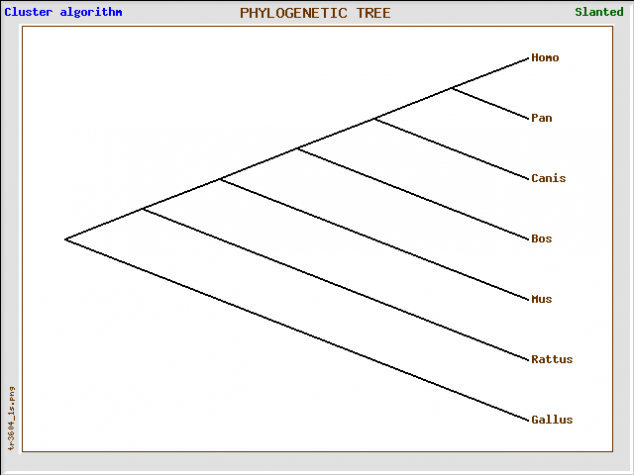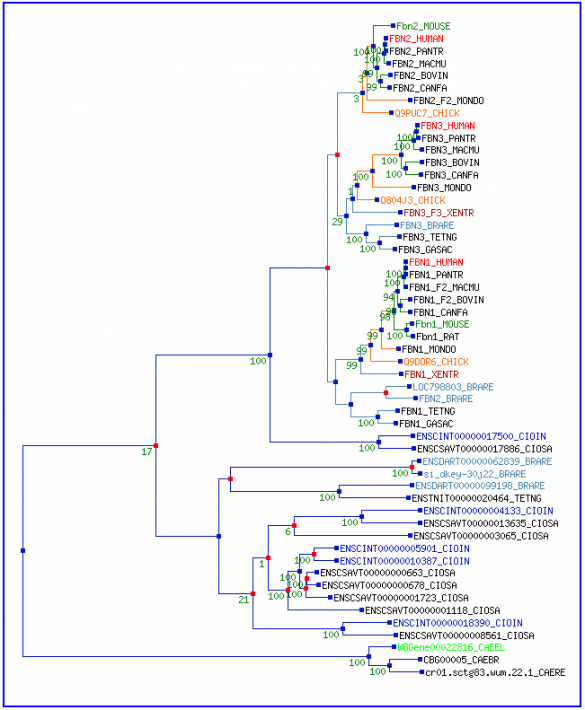This web page was produced as an assignment for Genetics 677, an Undergraduate course at UW-Madison
Phylogeny
After researching homologs of the human FBN1 gene and protein, the next step is to create a phylogenetic tree. Phylogeny is the study of evolutionary relatedness among organisms. This can be measured in many ways and through many different types of mathematical algorithms. Since the FBN1 gene and protein are large sequences, I had trouble entering the data in various phylogeny programs. In the end, Gene Bee was able to process the large amount of sequence information.
Phylogenetic Trees

Phylogenetic Tree created using GeneBee
This phylogenetic tree was created using GeneBee, a program that will create a tree when a data set is processed. This tree slanted tree shows that Gallus gallus (chicken) diverged first. This data makes sense because when looking at the homology results, the chicken FBN1 gene had the lowest max identity value when compared to the other homologs in other species. The species closest to humans is Pan troglodytes (chimpanzee) with the highest max identity percentage of 99 %.
This phylogeny was created using TreeFam containing FBN genes from many different species. This includes multiple FBN species from Humans such as FBN1, FBN2 and FBN3. Only FBN1 is known to cause Marfan Syndrome and any other disorders linked to connective tissue. The homolog found in C. elegans is also similar to FBN2, meaning that it could have started as a single gene in humans and diverged into two separate genes responsible for different functions. The most closely linked homologs are directly next to each other in the tree, as they have high max identity values, which can be seen on the Homology page. In these homologs, FBN also diverges into 3 different genes just as in humans.
References
(1) Gene Bee http://www.genebee.msu.su/genebee.html
(2) Tree fam http://www.treefam.org/
(2) Tree fam http://www.treefam.org/
Gabrielle Waclawik
[email protected]
May 13, 2010
www.gen677.weebly.com
[email protected]
May 13, 2010
www.gen677.weebly.com

